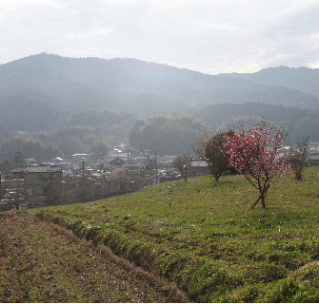Satoyama
”Back in the mountains I knew as a child
Fish filled the rivers and rabbits ran wild
Memories, I carry these wherever I may roam
I hear it calling me, my country home”
The landscape recounted in “Furusato (My Country Home),” a beloved and popular song in Japan, evokes “satoyama” or “nature with humans.” Satoyama, the ecosystem in Japanese villages, signify places where humans harmoniously live together with nature, and represent a centuries-old anchorage for Japanese. Satoyama areas consist of trees, insects, animals, rice paddies, underbrush, small-scale fields, reservoirs and chinju-no-mori. In Japan, living in harmony with nature has been important and necessary as most parts of Japan are covered by forests.
In satoyama, resource management/farming was conducted based on regional ecosystem and multipurpose land use. Satoyama, “nature with humans,” functioned as buffer zones between intact nature and human society. Also, indigenous knowledge, traditions and culture were preserved based on the co-management of satoyama by local communities.
However, big changes came to satoyama during the years of high economic growth in Japan. Satoyama provided agricultural fertilizers, wood and coal for local farmers. With the revolutions of fuels and fertilizers in the 1960s, satoyama also became development objects due to socio-economic causes. Accordingly, the traditional relationships between humans and nature were disrupted, and satoyama became abandoned forests due to insufficient management. In abandoned forests, extensive pine tree deaths from pine wilt or the large-scale expansion of bamboo groves were seen, and the specific landscapes and group of organisms formed and maintained through long-term management by humans were no longer preserved.
Based on such circumstances, the concept of satoyama is now being re-examined. Japan’s Ministry of the Environment and the United Nations University Institute of Advanced Studies (UNU-IAS) jointly initiated the SATOYTAMA Initiative. They launched the International Partnership for the SATOYAMA Initiative at the Tenth Meeting of the Conference of the Parties (COP10) to the Convention on Biological Diversity in October 2010.
Today, re-evaluation of ecosystem servicing provided by satoyama and re-construction of the relationship between humans and nature in modern society are urgently required, and the SATOYAMA Initiative is expected to contribute significantly to achieving “conservation of biological diversity” and the “sustainable use of its components,” objectives of the Convention on Biological Diversity.
“I've got this dream and it keeps me away
When it comes true I'm going back there someday
Chrystal waters, mighty mountains blue as emerald stone
I hear it calling me, my country home”
(”Furusato,” words by Tatsuyuki Takano, translated by Greg Irwin)
(Rieko Tanimoto)











